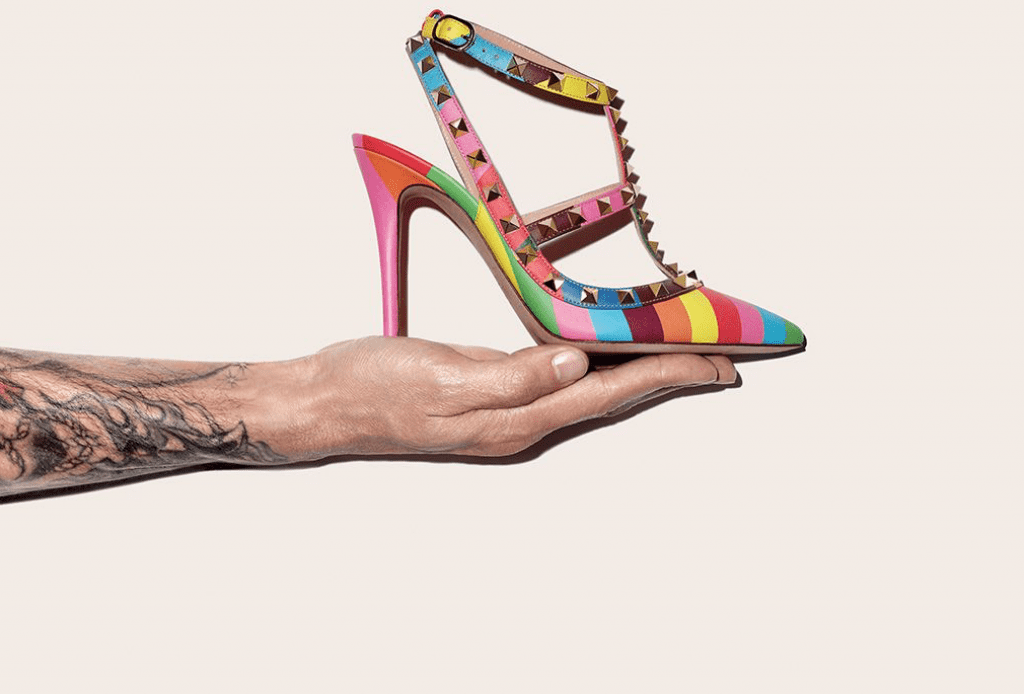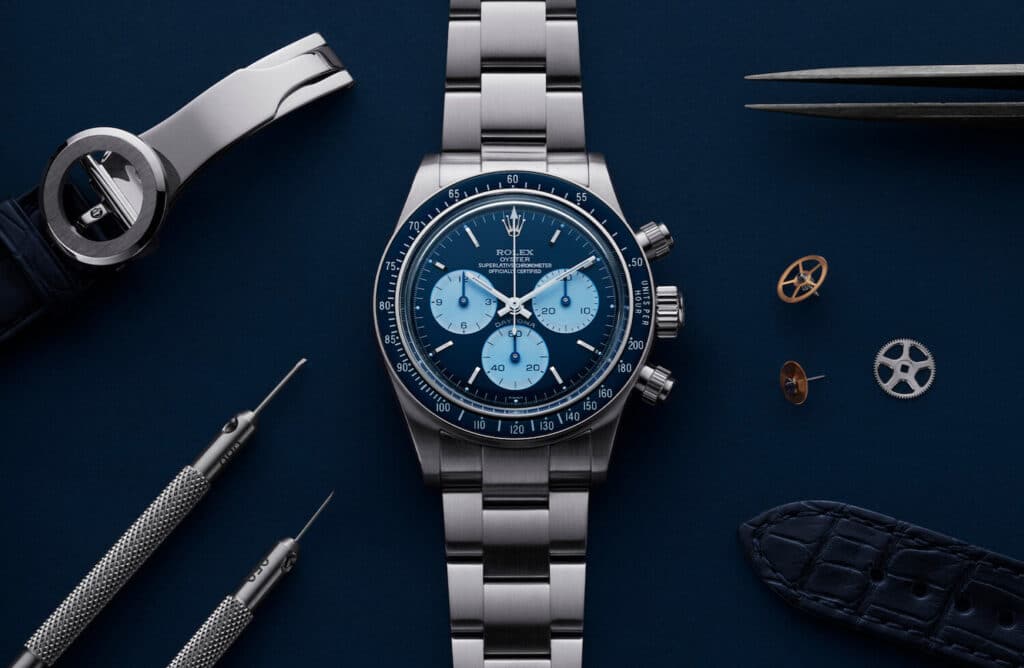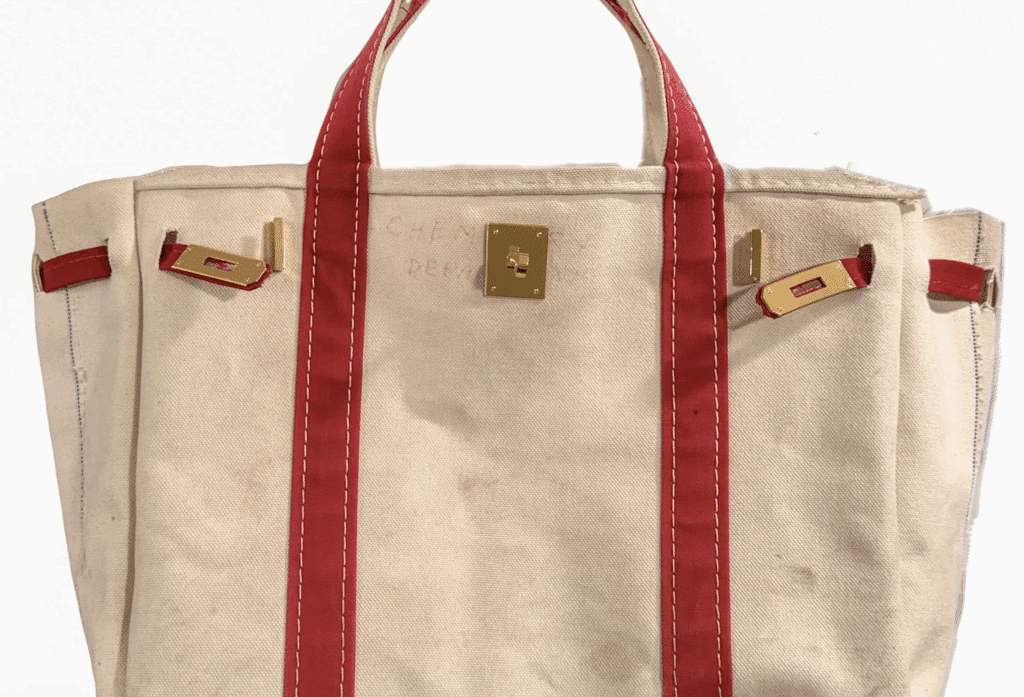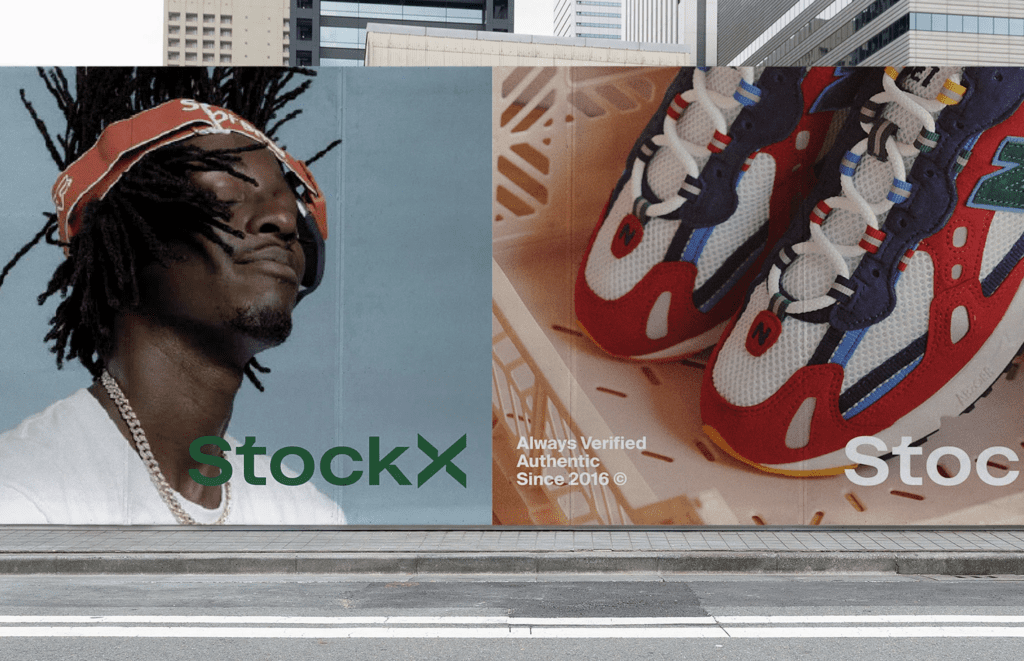Valentino has three new trademark registrations in its arsenal as of this week. The U.S. Patent and Trademark Office (“USPTO”) issued registrations on Tuesday for three variations of Valentino’s Rockstud shoes – the hot-selling collection of pyramid shaped stud-adorned footwear that former creative director duo Maria Grazia Chiuri and Pierpaolo Piccioli first introduced by way of the Italian fashion brand’s Fall/Winter 2010 runway show in Milan, and which the brand has been offering up since, helping it to garner over $268 million in sales between 2014 and 2019, alone.
The brand new trademark registrations respectively extend to Valentino’s single T-strap Rockstud pump (“a three-dimensional configuration of a shoe with a single ankle strap and T-strap and collar which are adorned with pyramid shaped studs”); its multi-strap Rockstud pump (“a three-dimensional configuration of a shoe with 2 ankle straps, a T-strap and collar which are adorned with pyramid shaped studs”); and a ballet flat version (“a three-dimensional configuration of a shoe with the entire collar that runs around the shoe adorned with pyramid shaped studs”) for use in connection with “luxury shoes” (class 25).
The registrations stem from applications that counsel for Valentino filed with the USPTO in late October 2019, and follow from subsequent pushback from the trademark office’s examining attorneys on the grounds that the shoe designs fail to function as trademarks. In other words, the configuration of the design elements do not serve as indicators of the source of the products, themselves, because they “consist of a nondistinctive product design or nondistinctive features of a product design,” and thus, are not registrable on the USPTO’s Principal Register without “sufficient proof of acquired distinctiveness.”
More specifically, at least one of the USPTO examining attorneys asserted in a non-final Office Action in February 2020 that the Rockstud designs do not serve to “indicate the source of” Valentino’s products to consumers or “identify and distinguish [them] from those of” other brands, in part because footwear brands “commonly use studs along the tops and along straps of shoes as a decorative feature of shoes.” That means that “consumers will perceive [the studs] only as an ornamental and nondistinctive feature of the goods,” according to the USPTO attorney, and not as a signifier of any single brand.
Counsel for Valentino responded to the USPTO’s pushback in August by way of three lengthy filings, arguing that the respective designs of the Rockstud-adorned footwear are, in fact, protectable trade dress that should be registered since the “shoes are well-known, and instantly recognized by consumers as a symbol of Valentino’s high-quality products, reputation, and goodwill.” In short: consumers are able to link the non-functional design elements of the shoes to the Valentino brand in the same way that they link a trademark-protected brand name or logo to a single source.
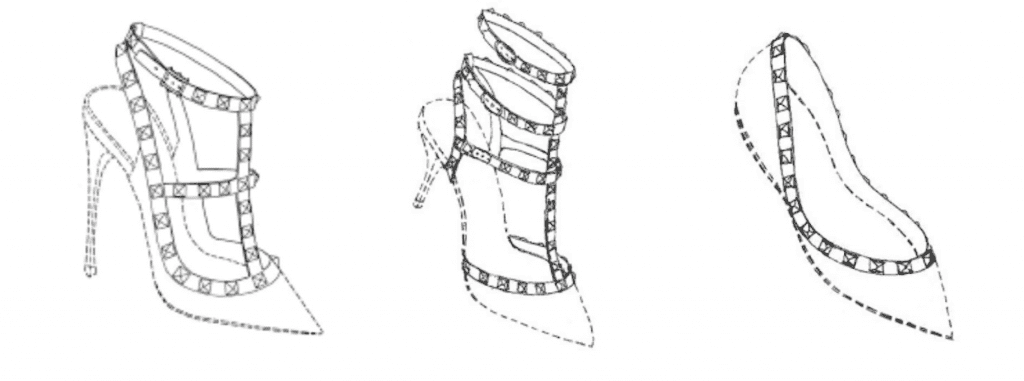
Considering the various factors that are used to determine whether a mark has amassed secondary meaning (a burden that must be established by an applicant that is seeking trademark protection for a product design, such as a shoe), including the amount of sales of the product, Valentino’s counsel asserted that the Rockstud ballet flat “generated over $41 million in sales [between 2014 and 2019].” The Rockstud multi-strap pump generated “over $75 million in sales during that [same] period,” Valentino claimed, and the single T-strap pump, alone, “generated over $152 million in sales.” These sales, paired with the fact that the footwear designs have been “a mainstay on store shelves for over a decade,” serve as evidence of “their strength in the market and constant profitability.”
In terms of advertising investment and unsolicited media attention, other secondary meaning factors, Valentino contended that consumers have come to associate the design of the footwear with the Valentino brand thanks to its practice of spending “millions of dollars promoting the sales of its Rockstud design[s] in a wide variety of media,” and as a result of the footwear being “heavily and widely promoted throughout the United States and the world, featured by different media outlets, and worn by countless celebrities appearing in magazines, social media, and news articles.”
Still yet, Valentino asserted that “within five years of introducing the Rockstud shoes, [its] revenues doubled,” which is a testament to the “incredible success” of the shoes and the “tremendous renown” they have achieved. With that in mind and given that a “determination as to whether a mark has acquired distinctiveness [depends largely on] evidence, such as sales, presence on the market, renown, and advertisement,” Valentino claims that its Rockstud shoe have “acquired distinctiveness as trademark[s] in the U.S. through [its] exclusive and continuous use since 2010.”
Louboutin’s Red & Bottega’s Weave
Having set out evidence that “the Rockstud [designs have] acquired distinctiveness as trademark[s] in the United States,” Valentino turned its attention to other, similar examples of registered trademarks. For example, the fashion brand’s counsel referenced the U.S. Court of Appeals for the Second Circuit’s 2012 decision in the Christian Louboutin v. Yves Saint Laurent lawsuit, which held that “Louboutin had demonstrated evidence that the public associated the lacquered red sole of its shoes with Louboutin” based on its advertising expenditures, media coverage, and sales success, which “demonstrated both that Louboutin has created a symbol and that the symbol has gained secondary meaning that causes it to be ‘uniquely’ associated with the Louboutin brand.”
Counsel for Valentino argued, essentially, that if Louboutin’s red soles have acquired distinctiveness, its Rockstud offerings have, too, given that the evidence that it submitted “shows that Valentino has enjoyed similar success for the Rockstud [footwear designs].”
In that same vein, Valentino cited the USPTO Trademark Trial and Appeal Board’s 2013 determination that Bottega Veneta’s Intrecciato weave design could be registered as a trademark despite an examining attorney’s prior refusal due to the evidence that the Kering-owned fashion brand “presented showing the extensive publicity, sale success and presence [of the weave design] in the market.”
“Specifically, Bottega Veneta submitted evidence to show that its ‘weave design’ was on sale in nineteen high-end Bottega Veneta boutiques, had been featured in several editorials such as [those in] Elle, Vogue, Time and others, and had generated approximately $275 million dollars in sales over the span of six years,” Valentino asserted, and the Trademark Trial and Appeal Board “acknowledged that due to the success and exposure such pattern indicates the source of the goods.”
Valentino argued that if Bottega Veneta’s weave made the cut in terms of secondary meaning, its Rockstud designs should, too, as they are “even more distinctive than the ‘weave design’ … as the distinctive features on Valentino’s Rockstud shoe[s] are not merely a pattern, but rather, [are] marks comprised of several elements: the shape of the leather shoe, the shape of the studs, [and] the number and positioning of the studs, that together indicate the source of the shoes.”
Seemingly persuaded by Valentino’s responses to the first round of Office Actions, the USPTO has given the green-light to the respective styles, thereby, granting Valentino registrations (no. 6,219,645, 6,219,646, and 6,219,641) for the source-identifying design of the footwear.
The registrations – which come just months after the USPTO issued Valentino a registration for its previously-contested “Rockstud Spike” mark, and in light of a larger Rockstud-centric push by Valentino, which coincides with the tenth anniversary of the design, including a series of “Valentino Garavani Rockstud X” collaboration collections – are a clear demonstration of how big brands (and some relatively smaller ones, too) are going beyond the most traditional examples of trademarks, such as word marks and logos, to protect themselves and their more staple, hot-selling offerings.







